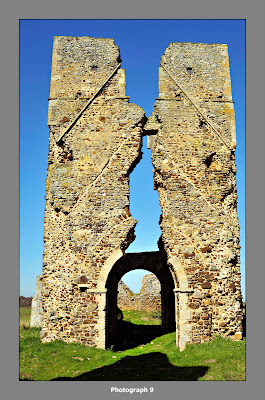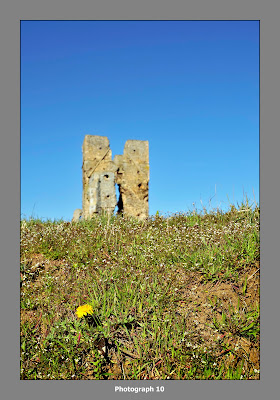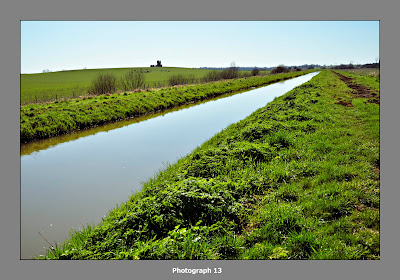Project 5 explores the possibilities of a single subject and requires a variety of composition and view point, using the same lens. For this exercise I had originally shot a series at Caste Acre Priory, but later rejected these on the grounds of insufficient variety. The location for the series below is Bawsey St James church. The only remains of a village dating to the Anglo Saxon period and visited by Channel 4 Time Team in March 1999.
To shoot the series I used the D3 with a 35mm f1.4 manual focus lens. The day was an amazingly clear Spring day without a cloud in the sky. Clouds would have offered some interest in the otherwise plain blue, however due to the small physical size of the church, the silhouette against a plain sky allows the subject to remain the centre of interest, even when at a distance.
To shoot the series I used the D3 with a 35mm f1.4 manual focus lens. The day was an amazingly clear Spring day without a cloud in the sky. Clouds would have offered some interest in the otherwise plain blue, however due to the small physical size of the church, the silhouette against a plain sky allows the subject to remain the centre of interest, even when at a distance.
The road leading up the small hill has a S shape curve and is fenced both sides with simple post and wire. The choices here are explored in Photographs 1 - 5. The church remains small in the frame and the emphasis is on the road and fence. Small changes in viewpoint had a major impact on composition. The horizon with its curved line allowed me to balance the composition with a number of options. Position of the horizon once again being important. Large foregrounds only work when there is some interest by way of texture or detail. Although similar in many respects they all have sufficient differences to allow further selection.


No 6 takes an entirely simplistic form, allowing the church to move to the centre and reduces the foreground. The overt amount of plain sky is always going to happen with a vertical format and the small foreground. In this instance the sky with its natural gradation to very deep blue is important as it offers balance and adds to the symmetry.


For No 7 and 8 I have moved in closer and we see more of the detail of the building, especially in No 8, where the frame is filled and the aspect ration changed a small amount to allow the building fit in the frame, and form a tighter composition.

For No 10 I moved down the slope and deliberately put the main subject out of focus, by limiting the depth of field. The small flower becoming the point of interest.

In No 11 and 13 I moved away by a considerable distance. No 11 is perhaps not the strongest of images, but is included for that purpose. No 13 reduces the church to almost a spec on the horizon. The strong diagonal of the river takes over and actually leads the eye away from the building, so again, while interesting, and fulfilling the brief to the maximum, is of little use.
Conclusion.
In normal practice it is unlikely that I would be working with only one lens. However for the project that was all I was allowed (the choice which one was mine), and to a degree it was interesting. This coupled with the choice and availability of viewpoints, created some shots that were more novelty than useful and that explains the omission of some photographs from the numbering sequencing. The lack of lens choice was crucial and knowing that no changes could be made once I had started, took the emphasis away from the camera, and I spent more time having to think about opportunity and viewpoint.
Conclusion.
In normal practice it is unlikely that I would be working with only one lens. However for the project that was all I was allowed (the choice which one was mine), and to a degree it was interesting. This coupled with the choice and availability of viewpoints, created some shots that were more novelty than useful and that explains the omission of some photographs from the numbering sequencing. The lack of lens choice was crucial and knowing that no changes could be made once I had started, took the emphasis away from the camera, and I spent more time having to think about opportunity and viewpoint.





No comments:
Post a Comment